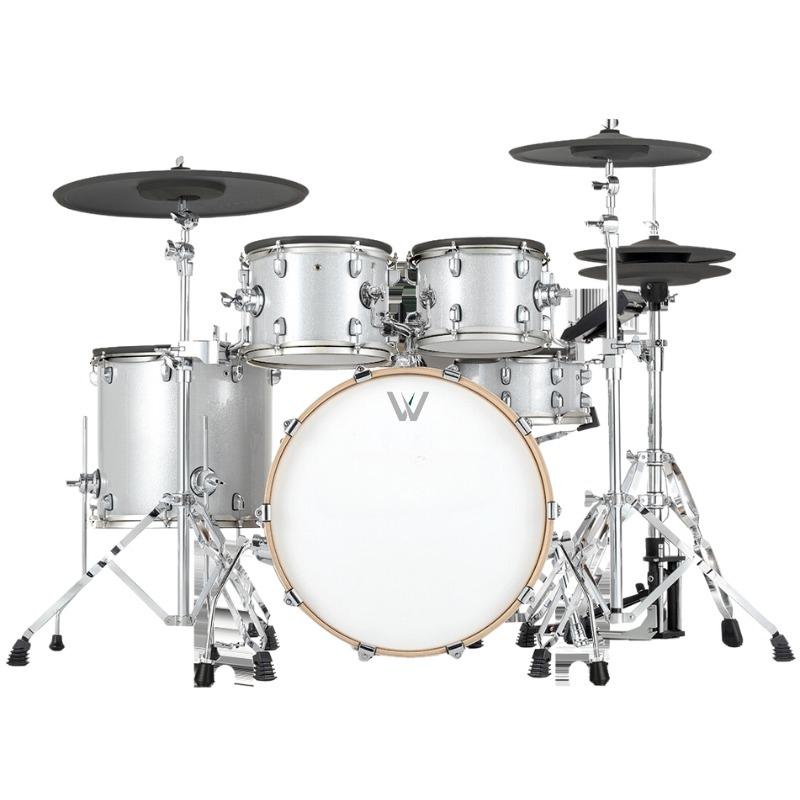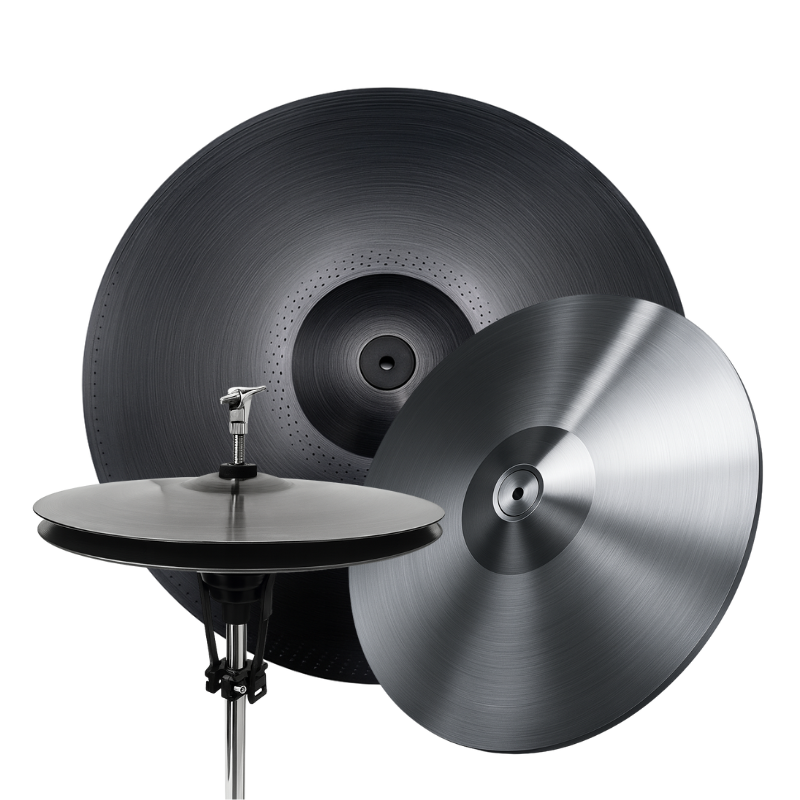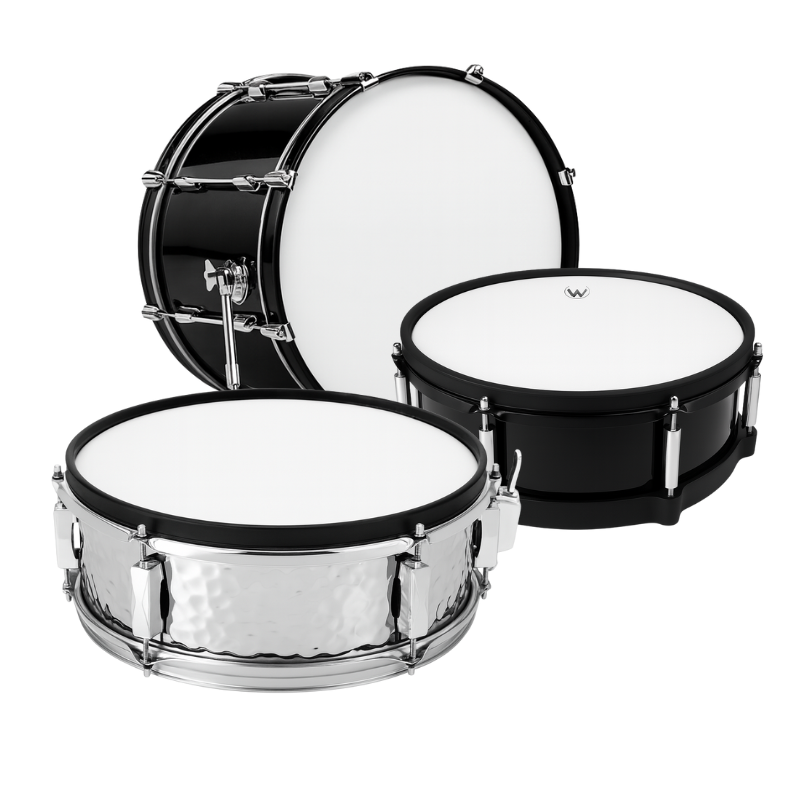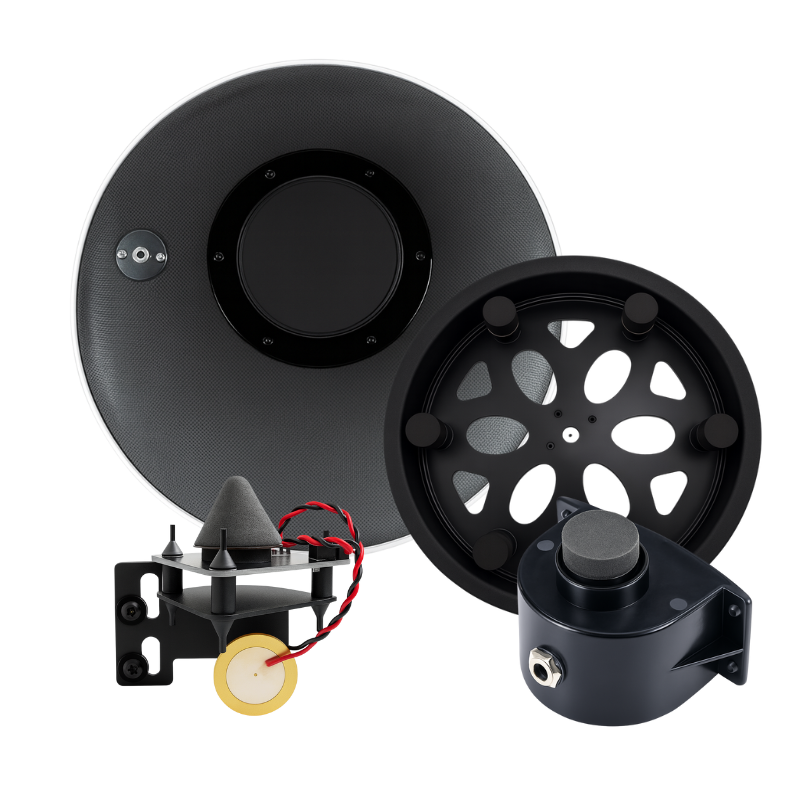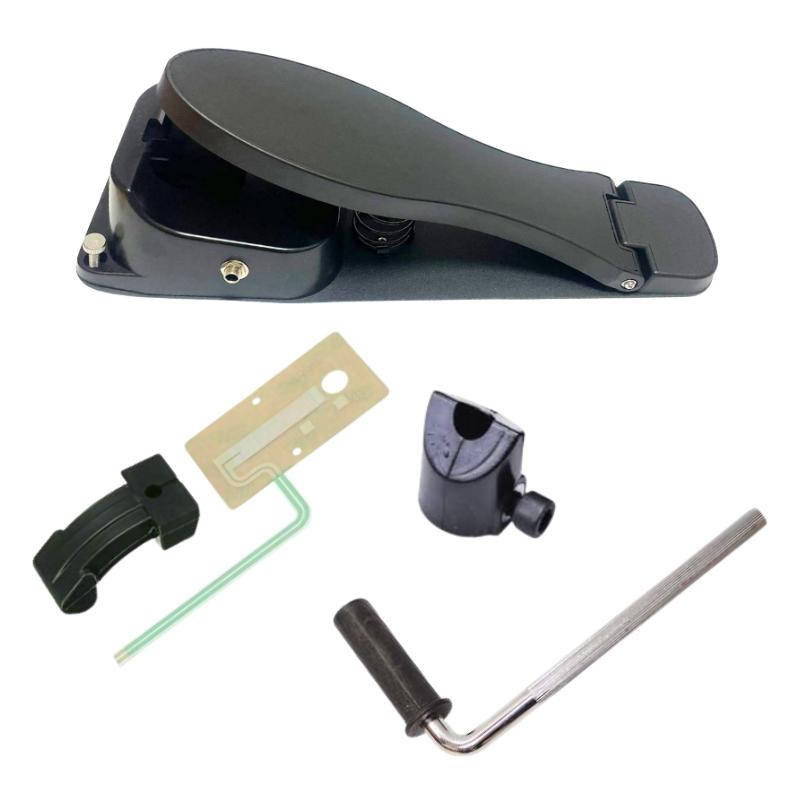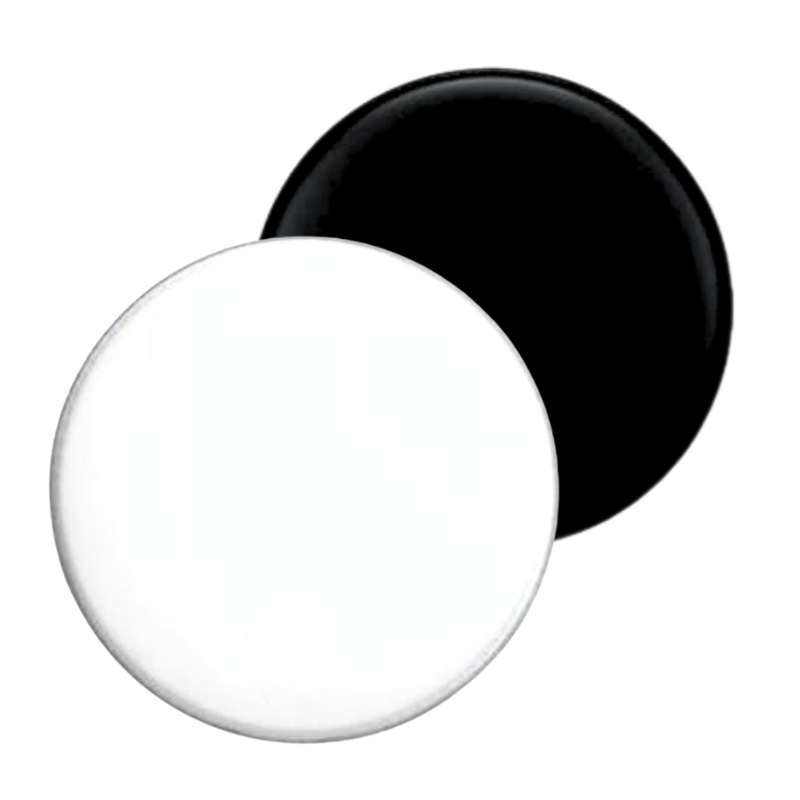
DIY: Turn Your Acoustic Kit into an Electronic/Hybrid Rig
Share
A complete, drummer-first guide with parts, install tips, and starter settings. Every core piece you need is available from World Drummers.
Why go DIY hybrid/electronic?
Keep your shells & feel while gaining silent practice, consistent studio sound, MIDI/USB control, and instant kit changes.
Build at your pace: start with kick/snare, then add toms and cymbals, and finish with hi-hat.
What you’ll need (high level)
Drum triggers (internal or external)
Mesh heads for quiet, consistent rebound
Electronic cymbals (dual-/triple-zone + choke; hi-hat system)
Electronic pads (optional add-ons: splash, aux percussion, FX)
Cables & a drum module (brain) from your preferred brand (Roland/Alesis/Simmons/EFNOTE/Yamaha)
Below you’ll find a deep-dive into each part with a direct link to the right World Drummers collection so you can source everything in one place.
1) Drum Triggers — what they do, how to choose, where to start
What: Triggers convert head/rim hits into electrical signals the module can read (velocity, zone, and position where relevant).
Types:
Internal triggers (cone/side): clean look, very consistent once set; ideal for permanent or pro installs.
External clip-on triggers: no shell drilling, fast to mount and remove; great for first builds or hybrid giggers.
Zones:
Snare: go dual-zone (head/rim) for rimshots and cross-stick.
Kick: single-zone is standard; use a beater patch on the mesh for longevity.
Toms: single-zone for simplicity; dual-zone if you want rim sounds.
Install tips:
Keep a tiny, even gap between the trigger cone and the mesh head (avoid constant pressure).
Tighten lugs in a star pattern; check that wiring doesn’t touch the shell.
Start with Sensitivity = medium, Threshold = low, and raise only if you get false hits.
Shop triggers:
World Drummers Drum Triggers → https://worldrummers.com/collections/drum-triggers
2) Mesh Heads — the foundation of feel and quiet play
Why mesh: Dramatically reduces acoustic volume, lets you tension feel like real heads, and stabilizes triggering.
How to choose:
Kick: thicker mesh for controlled rebound.
Snare: medium mesh for articulation and ghost-note clarity.
Toms: medium-light mesh for easy triggering and smooth rolls.
Tuning:
Finger-tight all around → ¼–½ turn per lug, evenly.
If you get hot-spots, lower Sensitivity or add a tiny bit more tension.
Shop mesh heads:
World Drummers Drum Mesh Heads → https://worldrummers.com/collections/drum-mesh-heads
3) Electronic Cymbals — zones, choke, ride bell, and hi-hat
Crashes: typically dual-zone (bow/edge) + choke over TRS.
Rides: triple-zone (bow/edge/bell). Some modules want the bell on a second jack—check your module input map.
Hi-hat: requires a controller (continuous CC or optical) + top cymbal trigger; proper calibration is essential for clean foot-chicks and semi-open nuance.
Compatibility snapshot (third-party cymbals):
Easiest: Roland, Alesis
Then: Simmons, EFNOTE
More tweaking: Yamaha (often needs alternate curves/assignments for bell)
Shop cymbals:
World Drummers Electronic Cymbals → https://worldrummers.com/collections/electronic-cymbals
4) Electronic Pads — expand your kit the smart way
Add auxiliary pads for percussion, splash, stacks, SFX, or extra toms. Pads are quick to map, easy to mount, and perfect for hybrid creativity.
Shop pads:
World Drummers Electronic Pads → https://worldrummers.com/collections/electronic-pads
5) Cabling & mounting (quick notes)
Use quality TRS cables for dual-/triple-zone cymbals; TS is fine for single-zone drums.
Label both ends (Kick, Snare, Tom1, Crash1, Ride, HH).
Keep cables off moving pedals/stands; add small cable ties along the rack/stands.
6) The Module (Brain) — choosing and setting up
Roland: expressive modeled+sampled response, excellent for 2/3-zone cymbals; user samples on TD-17/27/50 families.
Alesis (Strike): fantastic for user sample import and kit design; feature-rich for the price.
Simmons: straightforward, value-oriented; fast to dial.
EFNOTE: boutique, record-ready acoustic realism with elegant multichannel USB audio.
Yamaha (DTX-PRO/PROX): studio-clean; third-party cymbals often need extra curve/zone assignment work.
Fast start settings (common targets):
Sensitivity: medium (raise if soft playing doesn’t register; lower if you clip).
Threshold: just high enough to stop false hits.
Retrigger/Mask time: add a little for kick & hi-hat foot-splashes.
Hi-hat: always calibrate min/max before curve/offset tweaks.
7) Sample Import & Sound Expansion (what’s easy, what’s not)
Alesis Strike: easiest for WAV import, multilayer kits, and SD/USB management.
Roland TD-17/27/50: supports user samples; blend with onboard tones for realism+attack.
Simmons: check your model; higher units can load WAVs.
EFNOTE & Yamaha DTX-PRO/PROX: limited module-side import; pair with a DAW/VST over MIDI for limitless sound libraries (Superior Drummer, SSD, BFD, etc.).
8) Step-by-step build recipe (first-time success)
Step 1: Fit mesh heads on snare/kick (then toms) → tension evenly.
Step 2: Install triggers (start with snare/kick), connect to the module.
Step 3: Add electronic cymbals (Crash1, Ride, Hi-hat).
Step 4: Run pad/hi-hat calibration in the module.
Step 5: Tweak Sensitivity/Threshold/Curve until ghost notes and accents feel natural; save as “Home” kit.
Step 6: If you gig, clone a “Live” kit with slightly higher thresholds and shorter mask times to resist stage vibration.
Step 7: Optional: add electronic pads for FX/percussion and map them to unique sounds.
Direct links while you build:
Triggers → https://worldrummers.com/collections/drum-triggers
Mesh Heads → https://worldrummers.com/collections/drum-mesh-heads
Electronic Cymbals → https://worldrummers.com/collections/electronic-cymbals
Electronic Pads → https://worldrummers.com/collections/electronic-pads
9) Quick brand-by-brand cymbal setup tips
Roland (TD-17/27/50):
Crashes/Rides: Curve = Linear/Exp; Sensitivity 6–12; Threshold 1–2; Retrig 2–4.
Hi-hat: run calibration; tweak Offset for tight chick.
Alesis (Strike):
Cymbals: Sensitivity medium-high; Curve Linear/Log; set Bell Gain; Choke = Switch.
Hi-hat: Auto-calibrate; bump Mask Time if foot-splashes double-trigger.
Simmons (SD):
Cymbals: Sensitivity 8–12; Threshold 2–3; confirm edge choke.
Hi-hat: HH Offset + Curve; increase Retrig Cancel if fluttery.
EFNOTE:
Cymbals: use the closest pad type; Curve Natural/Linear; fine-tune bell.
Hi-hat: precise min/max calibration; small threshold moves go far.
Yamaha (DTX-PRO/PROX):
Map Bow/Edge first; assign Bell (often via second lead); Curve Soft/Linear; Threshold +1–2.
Hi-hat: calibrate; balance Gain and Curve for accurate foot-chicks.
10) Noise & feel optimizations (nice-to-haves)
Kick isolation pad/riser to cut floor rumble.
Foam/rubber washers under mounts to reduce crosstalk.
Consistent stick height over cymbals helps zone reliability and reduces hot-spots.
See & hear it in action
Demos, playthroughs, and setup ideas are posted regularly:
World Drummers Instagram → https://www.instagram.com/worlddrummersofficial/
Why World Drummers for DIY?
Everything in one place: triggers, mesh heads, cymbals, and pads—engineered to work together.
Module-friendly designs: wiring and zone logic that play nicely with Roland/Alesis (and tunable for Yamaha/others).
Support for builders: real-world settings and fast help so you’re gig-ready sooner.

